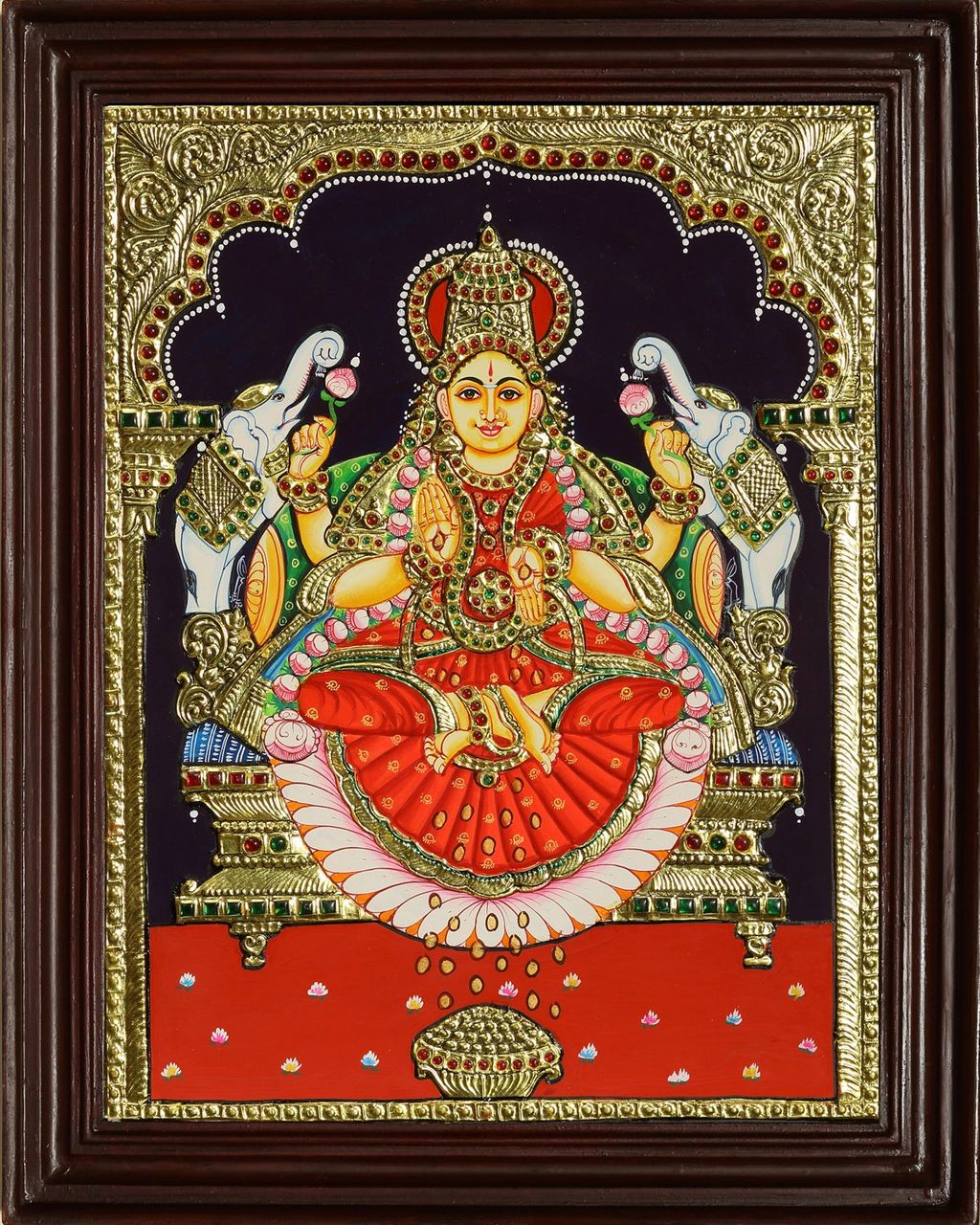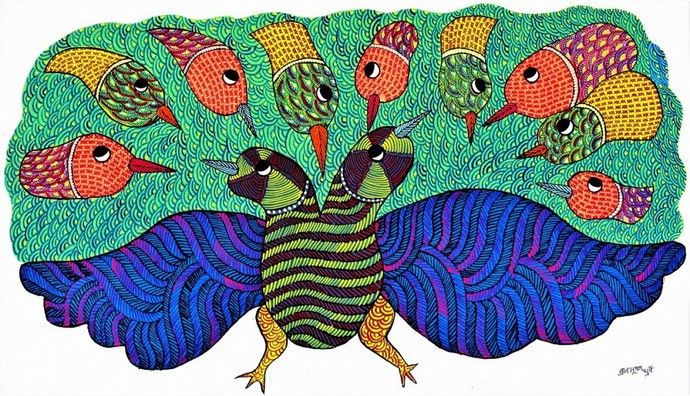Indian Art Forms That Stood The Taste Of Time!
Jun 13, 2019 • 104 views
UNITY IN DIVERSITY
That’s how India is defined globally. Being culturally diverse and distinct, ancient Indian art forms have evolved over the years; some remained traditional, some adapting to remodelling. Some depict Deities from religious scriptures while some project the beauty of nature- with diverse flora and faunas. But they were all unique and royal in their own might, and vibrant, as Indians have forever liked. In those foregone days, they were made with natural dyes- colours made from leaves, flowers, soil, mud, charcoal, and were done on clothes—giving it a sense of natural purity and vintage nostalgia.
Some of those majestic art forms are enumerated here:
MADHUBANI PAINTING:

Also known as Mithila painting due to its origins in the Mithila region of Bihar, Madhubani is one of the most celebrated styles of folk paintings in India . It was a form of wall art made on canvas, cloth or cow-dung-washed hand paper using natural dyes and colours. The eye-catching elements are— simplicity in geometrical patterns, vibrancy of colours, symbolic images, and scenes from mythology. This spectacular art style wasn’t known to the outside world until discovered by the British colonial William G. Archer in 1934 in the interior walls of broken houses while inspecting the damage after the massive Bihar earthquake. Its simple and evocative portrayal of culture and traditions make Madhubani unique.
https://www.culturalindia.net/indian-art/paintings/madhubani.html
TANJORE (THANJAVUR) PAINTINGS:

Tanjore paintings or Thanjavur paintings has its origins in Tanjore, Tamil Nadu in around 1600 AD. Use of precious or semi-precious stones, gold foil and cut glasses lends the painting a surreal look! These intricately handmade paintings are easy to fall for. The panel paintings on wooden planks depict Gods and Goddesses, while nature with its rich flora and faunas are other recurring themes. The shine and glean of the gold leaves used in these artworks last forever.
https://www.culturalindia.net/indian-art/paintings/tanjore.html
KALAMKARI:

Literally meaning ‘drawings with a pen’, Kalamkari is a 3000-year-old organic art form of Andhra Pradesh. This exquisite folk art of hand and block printing involves earthy colours like indigo, green, rust, black and mustard. The motifs range from flora and fauna, to epic scenes from the Mahabharata or the Ramayana. It is now predominantly incorporated in textile industries, and is very popular among sarees and ethnic clothing!
https://en.wikipedia.org/wiki/Kalamkari
KALIGHAT PAINTING:

TheKalighat paintingstyle developed around Mid-19thcentury Bengal, from Kalighat. This form of art was done by a group known as “patuas” hence the name Kalighata Pata on cloth andpattas. They at first depicted mythological deities then turned towards imparting awareness against social anomalies in its viewers. Along with simple yet captivating motifs and swift outlines, earthy Indian colours took Kalighat painting to a whole new level. This painting style has inspired one of the most prolific Bengali artists- Shree Jamini Roy.
WARLI PAINTING:

Warli is one of the oldest forms of Indian folk art, and has its origins in the Warli region of Thane and Nasik areas of Maharashtra. It dated back to 2500 years when women used twigs to draw lively designs with rice paste on mud walls of tribal houses to mark celebrations of harvests or wedding ceremonies. Simple geometrical patterns using circles, triangles and squares forming various motifs in white against a black, red or muddy surface are characteristic features of this art form. One of the most popular themes in Warli art is a spiral chain of humans surrounding one motif at the centre. This was in compliance with their belief that life is a like a continuum without any beginning and termination.
PATACHITRA:

Patachitra is the cloth-based scroll painting from Odisha and West Bengal that was widely used in the practice of narrating mythological stories. Sharp, angular, bold outlines, and usage of vibrant colours with decorative borders are some of the unique features. Depicting mythological episodes, this painting style is widely adored by art enthusiasts!
https://www.utsavpedia.com/motifs-embroideries/pattachitra-on-clothing/
PHAD:

ThePhad painting style is the narrative scroll painting style of Rajasthan that is more than 1000 years old. Phad painting is traditionally done on a 30- or 15 feet-long canvas or cloth, known as phad, using organic colours. They are basically running narratives of folk deities of Rajasthan, mostly about their lives and heroic deeds.
https://www.artisera.com/blogs/expressions/phad-paintings-of-rajasthan
GOND TRIBAL ART PAINTINGS:

These vibrant paintings of “dots and dashes” were exclusivelydeveloped by Gondi tribe of Central India; namely- Madhya Pradesh, parts of Orissa and Chhattisgarh . Great intricacy, rich detailing and vibrant colours are key features of this traditional form. In ancient times, the colours used were natural and were extracted from natural resources like cow dung, plant sap, charcoal, coloured soil, mud, flowers, leaves etc. and with the touch of modernisation, acrylics paints are used by the Gond artists. These traditional tribal art form is now internationally acclaimed with pioneer artists like Jangarh Singh Shyam, Durga Bai Vyam.
https://www.esamskriti.com/e/Culture/Indian-Culture/Gond-Paintings-1.aspx
RAJASTHANI MINIATURE PAINTING:

The Miniature painting style originated in the Mughal era (around 16th Century) and is considered as a vital milestone in Indian artistic history. Paper-based ‘wasli’ and colours of stones, minerals, conch-shells are the integral components of this art-form. It gradually developed with a blend of Islamic, Persian and Indian elements. Intricate detailing, acute expressions and fine brushworks are the unique attributes. Men are portrayed as lively as possible with large eyes, pointed nose and a slim waist with the traditional turbans on their head. This art form flourished greatly under the reign of Akbar and Shah Jahan. Till date it is widely practised in Rajasthan.
https://artsandculture.google.com/exhibit/PgLSknKVv0F_JQ
KERALA MURALS:

Being one of the world’s most celebrated form of frescos, the Kerala mural paintings date back to the 7th century AD. These are deeply spiritual and are based on mythological themes, tales of Lord Krishna and mystic forms of Siva and Shakti. They are known for their vivid colour combinations that appear quite attractive altogether.
https://www.keralatourism.org/kerala-article/mural-paintings-kerala/549
